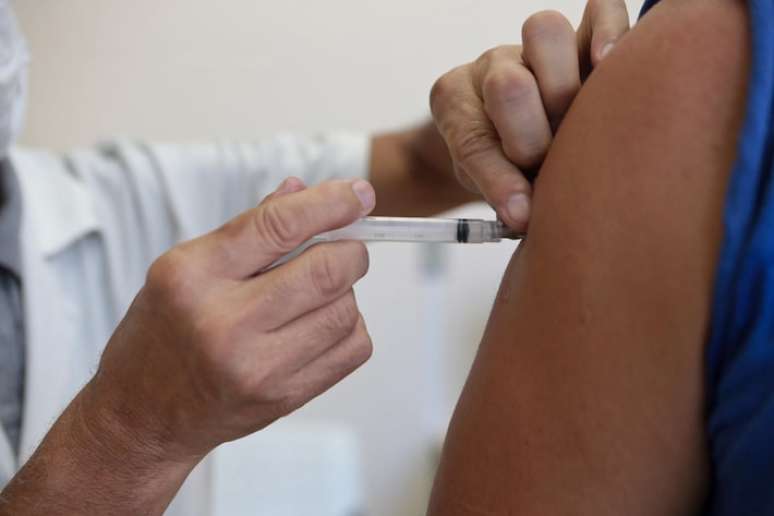A new Mpox epidemic has scared many people, but how to protect yourself from the virus? See here
Last Wednesday, 14, in a meeting with the Emergency Committee of the International Health Regulations, the World Health Organization (WHO) declared Mpox a public health emergency of international concern.
What is Mpox?
Mpox is a disease caused by the Mpox virus (MPXV), of the genus Orthopoxvirus and the family Poxviridae. It is a viral zoonosis, in which its transmission to humans can occur through contact with:
- Person infected with Mpox virus;
- Materials contaminated by the virus.
- Infected wild animals (rodents).
Is there a vaccine available against Mpox?
The Ministry of Health reported that it is negotiating with the Pan American Health Organization (PAHO) the emergency acquisition of 25,000 doses of the Jynneos vaccine to combat the disease.
According to the ministry, the vaccination strategy prioritizes the protection of people at greatest risk of developing severe forms of the disease. This definition was made together with representatives of city and state councils, following the technical and scientific assessment of experts.
Pre-exposure vaccination
- People living with HIV/AIDS (PLHA): cisgender men, transvestites, and transgender women aged 18 years or older and with an immunological status identified by a CD4 T-cell count of less than 200 cells in the past six months;
- Laboratory professionals working directly with orthopoxviruses in biosafety level 2 (NB-2) laboratories, ages 18 to 49.
Post-exposure
- Persons who have had direct contact with body fluids and secretions of persons suspected, probable or confirmed to have the disease, whose exposure is classified as high or medium risk, according to WHO recommendations, based on local surveillance assessment.
For pre-exposure vaccination, the Ministry of Health recommends respecting an interval of 30 days between each previously administered vaccine.
In a post-exposure situation, where the primary goal is to block transmission, the recommendation is that the application be performed regardless of previous administration of any immunobiological.
How does Mpox infection occur?
The main form of transmission of MPOX is through direct person-to-person contact (skin, secretions) and close and prolonged exposure to droplets and other respiratory secretions. It also occurs:
- Direct person-to-person contact with rashes and skin lesions;
- Contact with body fluids (such as pus, blood from lesions) of an infected person;
- Contact with ulcers, lesions or wounds in the mouth;
- Contact with recently contaminated objects, such as clothing, towels, bedding;
- Contact with objects such as utensils and dishes that have been contaminated with the virus through contact with a sick person.
Droplet transmission typically requires close, prolonged contact between the infected patient and other people, making health care workers, family members, and intimate partners more at risk of infection.
A person can transmit the disease from the moment symptoms begin until the rash has completely healed and a new layer of skin has formed.
The disease usually progresses to mild to moderate conditions and can last from 2 to 4 weeks, according to the Department of Health.
How to protect yourself from Mpox
The main form of protection against Mpox is prevention. The Ministry of Health recommends avoiding direct contact with people suspected or confirmed to have the disease. And if there is a need for contact (for example: caregivers, health workers, close family members and partners, etc.) use gloves, masks, aprons and protective glasses.
People suspected or confirmed of the disease must undergo immediate isolation, not share objects and materials of personal use, such as towels, clothes, sheets, toothbrushes, cutlery, until the end of the transmission period.
The folder also recommends washing your hands regularly with soap and water or with alcohol gel, especially after contact with the infected person, their clothes, sheets, towels and other objects or surfaces that may have come into contact with the rashes and lesions of the virus. . skin or respiratory secretions (e.g. utensils, dishes).
“Wash the person’s bedding, clothing, towels, sheets, cutlery, and personal effects with hot water and detergent. Clean and disinfect all contaminated surfaces and dispose of contaminated waste (such as bandages) appropriately,” says Saúde.
Currently, treatment of mpopx cases is based on clinical supportive measures aimed at alleviating symptoms, preventing and treating complications, and avoiding sequelae. To date, there is no drug specifically approved for Mpox.
Mpox in Brazil, how are you?
In Brazil, however, there is no reason to panic, according to Clarissa Damaso, director of the Laboratory of Molecular Biology of Viruses at the Federal University of Rio de Janeiro (UFRJ). The virologist is one of the 16 members of the WHO committee that assessed the emergency of the mux epidemic.
Here, according to the Ministry of Health, 709 confirmed or suspected cases of Mpox were recorded in 2024. This is much lower than the total number of cases recorded in 2022, the year in which an epidemic of the disease occurred in the country, with more than 10 thousand cases reported.
According to the file, there have been no deaths from Mpox in Brazil since April 2023. Adding the total number of deaths from 2022 to date, there have been 16 deaths.
Source: Terra
Ben Stock is a lifestyle journalist and author at Gossipify. He writes about topics such as health, wellness, travel, food and home decor. He provides practical advice and inspiration to improve well-being, keeps readers up to date with latest lifestyle news and trends, known for his engaging writing style, in-depth analysis and unique perspectives.









